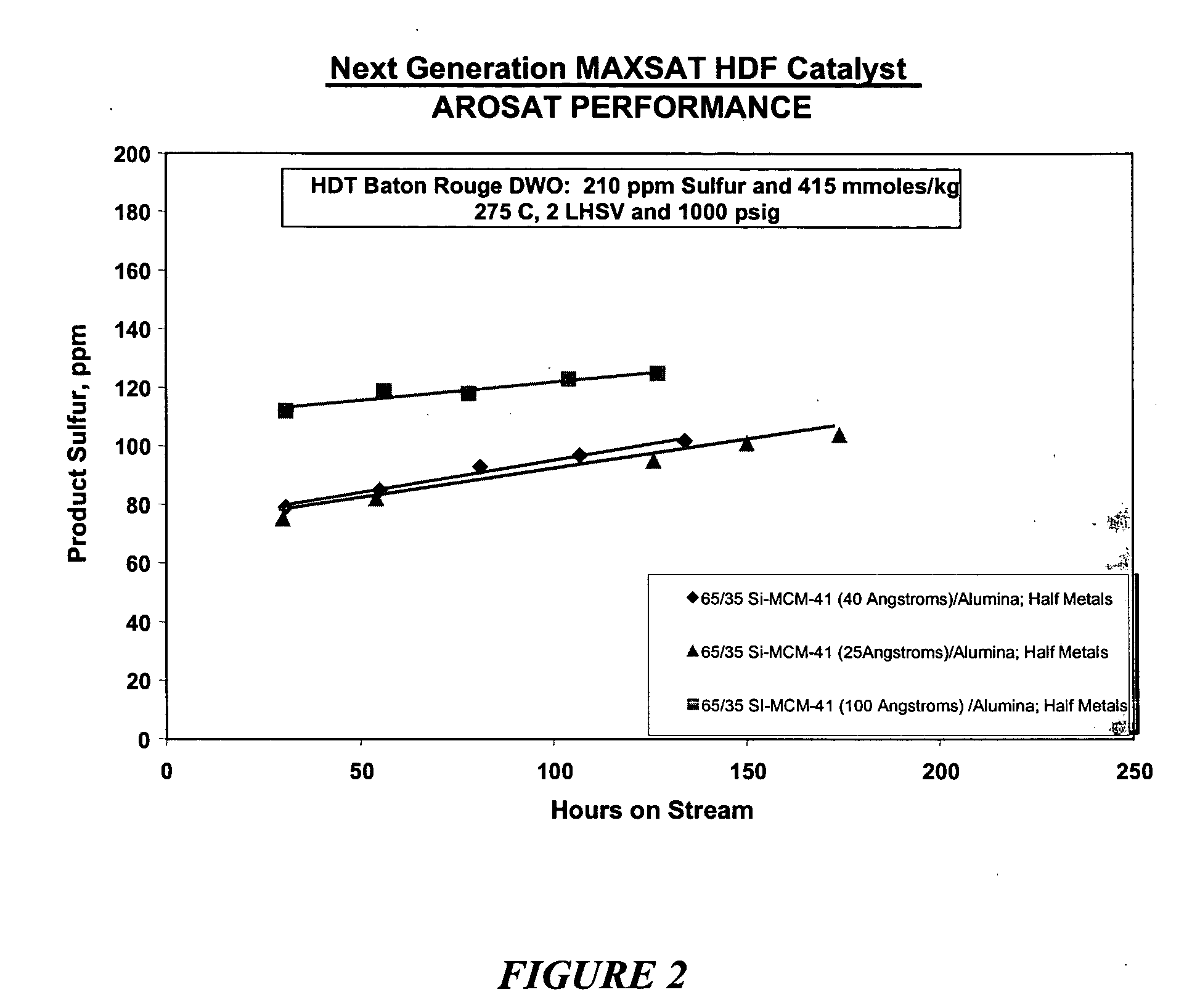Process to hydrogenate aromatics present in lube oil boiling range feedstreams
a technology of hydrogenation process and lubricating oil, which is applied in the direction of hydrocarbon oil treatment products, physical/chemical process catalysts, organic chemistry, etc., can solve the problems of reducing the yield of lubricating oil, expensive operating conditions, and low yield
- Summary
- Abstract
- Description
- Claims
- Application Information
AI Technical Summary
Benefits of technology
Problems solved by technology
Method used
Image
Examples
example
[0058] A series of MCM-41 containing catalysts were made using Si-MCM-41 (800:1 SiO2:Al2O3) with different diameter pore openings. MCM-41 mesoporous support materials with pore openings about 25, 40 and 100 Å in diameter were prepared into a filter cake by. The filter cake was precalcined in nitrogen at about 540° C. The precalcined MCM-41 materials were then mixed with a Versal-300 alumina binder and extruded into 1 / 16-inch (1.6 mm) cylinders. The extrudates were dried and then calcined in air at about 538° C. The calcined extrudates were then co-impregnated with 0.3 wt. % platinum and 0.9 wt. % palladium and dried at 120° C. The catalysts then received a final calcination in air at 304° C. to decompose the platinum and palladium compounds. Properties of the finished catalysts are summarized in the Table below. Note that metal dispersion, as measured by oxygen chemisorption, is similar for all the finished catalyst but the benezene hydrogenation activity index increases with reduct...
PUM
| Property | Measurement | Unit |
|---|---|---|
| 2θ | aaaaa | aaaaa |
| 2θ | aaaaa | aaaaa |
| boiling points | aaaaa | aaaaa |
Abstract
Description
Claims
Application Information
 Login to View More
Login to View More - R&D
- Intellectual Property
- Life Sciences
- Materials
- Tech Scout
- Unparalleled Data Quality
- Higher Quality Content
- 60% Fewer Hallucinations
Browse by: Latest US Patents, China's latest patents, Technical Efficacy Thesaurus, Application Domain, Technology Topic, Popular Technical Reports.
© 2025 PatSnap. All rights reserved.Legal|Privacy policy|Modern Slavery Act Transparency Statement|Sitemap|About US| Contact US: help@patsnap.com


